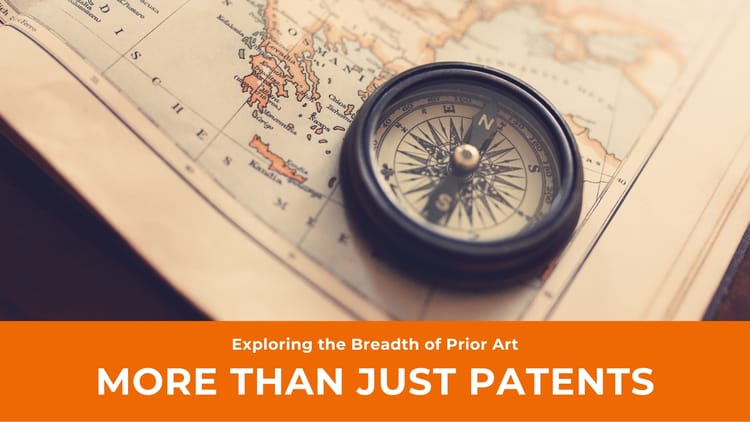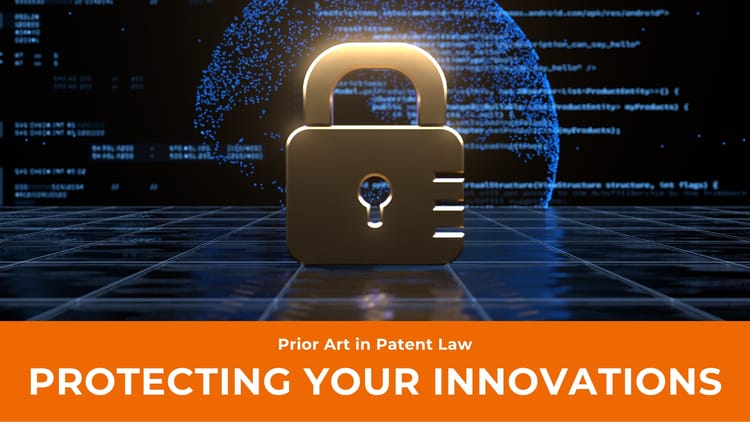Defining Prior Art: A Detailed Overview
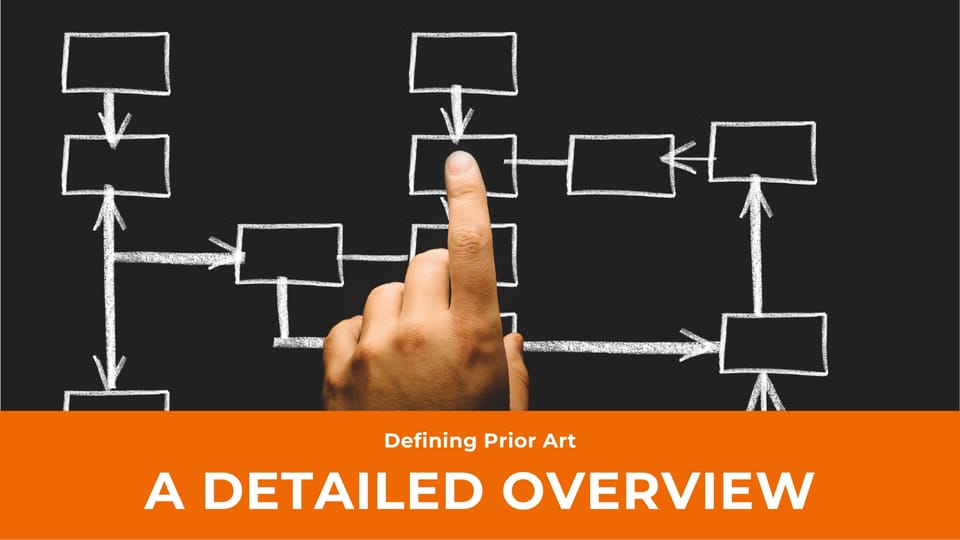
Introduction
In the intellectual property and patent law world, one term often emerges as pivotal and perplexing: Prior Art. This concept can be a maze of complexities and nuances at the heart of patent discussions. Understanding prior art is not just an academic exercise but a practical necessity for inventors, legal professionals, and businesses.
In this comprehensive exploration, we will delve into the multifaceted nature of prior art. This isn't just about grasping a definition; it's about understanding its broader implications, various forms, and its critical role in the patenting process. We will dissect its legal nuances, explore its types, and examine its significance in different jurisdictions.
By the end of this article, you'll have a clearer, more nuanced understanding of prior art. We’ll cover everything from the basic definitions to the complexities of identifying prior art in patent law. We'll also look at real-world examples that illustrate its impact and the challenges involved in its identification.
What is Prior Art?
Brief History of Prior Art
Prior art is a concept as old as patent law itself. Its roots can be traced back to the earliest days of patent legislation, designed to balance the rights of inventors with the public interest. Initially, prior art was rudimentary, often limited to existing patents and printed publications. However, as industries evolved and technology advanced, the definition expanded. This expansion reflected the growing complexity of inventions and the need for a robust system to assess the novelty of new ideas.
Throughout the centuries, different jurisdictions have shaped and reshaped the concept of prior art. In the United States, for instance, the Patent Act of 1952 marked a significant development in how prior art was considered, introducing a more structured approach. Meanwhile, international agreements like the Paris Convention and the Agreement on Trade-Related Aspects of Intellectual Property Rights (TRIPS) have sought to harmonize aspects of patent law, including the treatment of prior art, across countries.
Basic Definition
Prior art refers to evidence that your invention is already known before filing a patent application. It doesn't necessarily have to exist physically or be commercially available. It can be an earlier patent, a published article, a product on sale, or even a public demonstration. The fundamental criterion is that the prior art is available to the public in some form before the date of filing.

Common Misconceptions about Prior Art
Several things could be improved surrounding prior art. Here’s a quick rundown:
- It's All About Patents: Many assume prior art is exclusively about existing patents. It encompasses a broader spectrum, including non-patent literature and undocumented public disclosures.
- Geographical Limitations: Another common misconception is that prior art is limited to one's country or region. However, prior art is a global concept; an invention disclosed in another country can still constitute prior art.
- Language Barriers: There's also a myth that prior art must be in the same language as the patent application. Prior art in any language can be relevant.
Understanding these nuances is crucial for anyone navigating the patent system. Prior art is not just about what exists; it's about what is known, and this knowledge plays a critical role in the patenting process.
Why Prior Art Matters
Prior art is not just a technical term tucked away in legal textbooks; it's a cornerstone of the patent system, impacting both patent applications and litigation significantly. Understanding why it matters can change how inventors and businesses approach patents.
Importance in Patent Application and Litigation
Firstly, in the context of a patent application, prior art serves as a yardstick for measuring the novelty and non-obviousness of an invention. The existence of prior art can be a deal-breaker; if an invention is already known from prior art, it cannot be patented. This is because patents are granted only to novel innovations, not modifications or improvements of what is already publicly known.
In litigation, prior art often becomes the battleground. In patent infringement lawsuits, for example, defendants may use prior art to challenge the validity of a patent, arguing that the patent should never have been granted in the first place due to the existence of prior knowledge. Successfully proving that a patent is invalid due to prior art can lead to revoking the patent.
Innovation and Competition
Let's consider its role in fostering innovation and competitive business practices. It might seem counterintuitive, but the concept of prior art promotes innovation. How? Ensuring that patents are only granted to genuinely new ideas encourages inventors to think beyond existing knowledge and push the boundaries of innovation. This creates a healthy, competitive environment where inventors and companies are motivated to innovate.
Moreover, the public nature of prior art supports collaborative innovation. When inventors and companies know existing technologies and solutions, they can build upon this knowledge, leading to new, more advanced, and sometimes interdisciplinary innovations. This not only accelerates technological progress but also prevents the wasteful duplication of efforts in research and development.
In essence, the dynamics of prior art in the patenting process embody a delicate balance. It's a system designed to reward genuine innovation while preventing the monopolization of existing knowledge. By understanding and respecting the role of prior art, inventors and businesses can contribute to a more vibrant and progressive landscape of innovation and competition.
Types of Prior Art
Understanding the different types of prior art is essential for anyone involved in the patent process. These categories define what can be considered prior art and guide inventors and businesses in conducting thorough prior art searches.
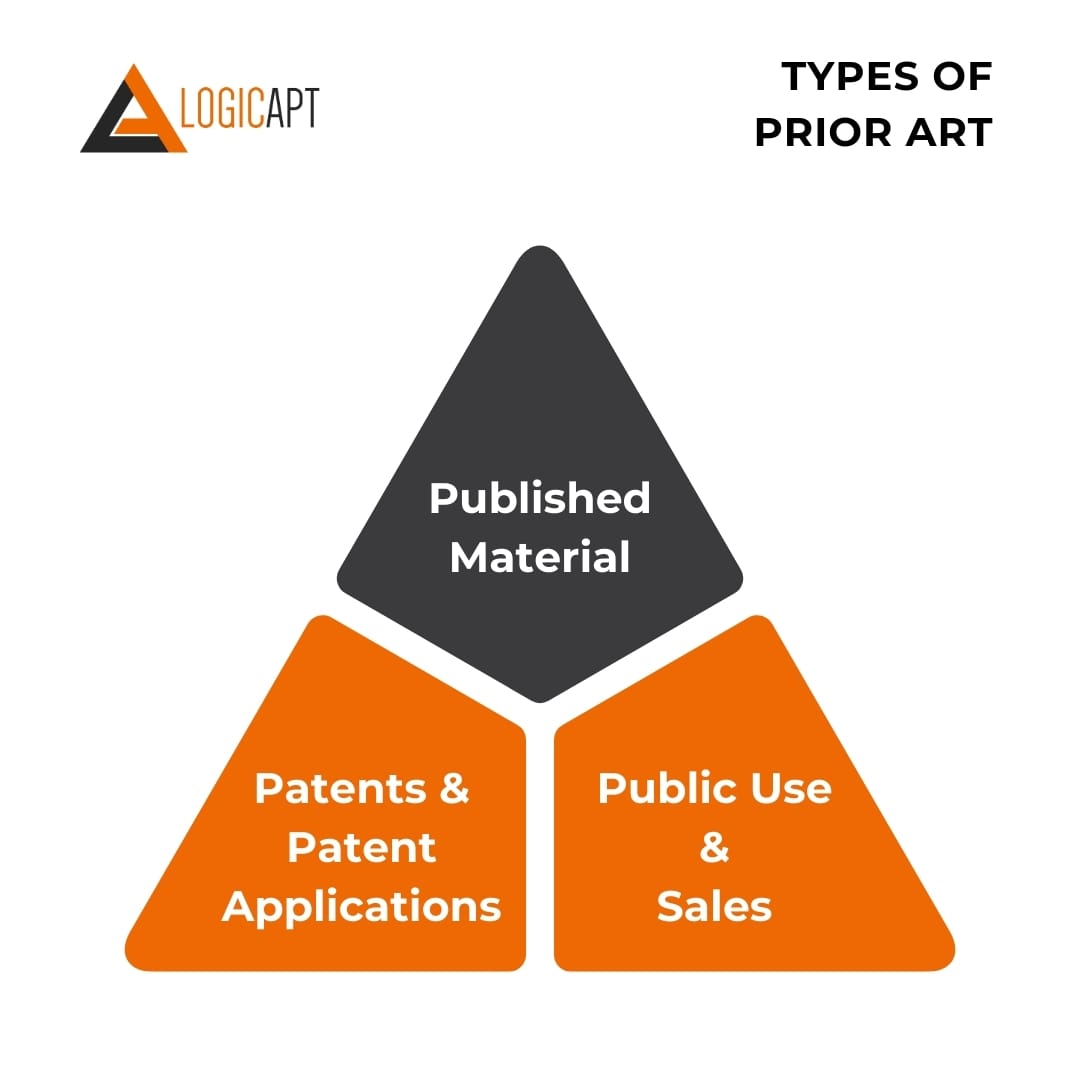
Published Material
Firstly, we have published materials that form a significant part of prior art. This category includes:
- Journals and Books: Scientific journals, technical publications, and books can all be sources of prior art. These publications, often peer-reviewed, provide detailed descriptions and insights into various fields, making them invaluable for assessing the novelty of an invention.
- Online Publications: In today's digital age, online resources have become increasingly important. Websites, online journals, databases, and even blogs can constitute prior art, provided they are publicly accessible and date back before the patent application.
The critical factor here is public accessibility. If information is published and accessible to the public before a patent application is filed, it can be used as prior art.
Patents and Patent Applications
These are the most straightforward types of prior art. An existing patent, anywhere in the world, can serve as prior art against a new patent application. Similarly, published patent applications can constitute prior art even if they haven’t matured into granted patents.
The rationale here is simple: patents and applications are public documents, often containing detailed technical information about inventions. They represent a wealth of knowledge and are often the first place inventors and patent examiners look when searching for prior art.
Public Use and Sales
Finally, we have instances of public disclosure through use or sale, often overlooked but equally significant. It can be considered prior art if an invention has been used publicly or sold before the patent application is filed. This includes demonstrations at trade shows, academic presentations, and commercial activities.
What’s the bottom line? The definition of prior art is broad and encompasses various forms of public disclosures, from scholarly articles to public demonstrations. For inventors and companies, understanding these categories is crucial for assessing the patentability of their innovations and for navigating the patent landscape effectively.
Prior Art and Patent Law
Regarding patent law, prior art isn't just a component; it's a cornerstone that shapes the entire patenting process. Understanding its legal implications and how they vary across different jurisdictions is vital. Additionally, mastering the art of searching for prior art is equally crucial. Let’s dive into these aspects.
Legal Implications in Different Jurisdictions
The treatment of prior art varies significantly from one jurisdiction to another, influencing patentability criteria and legal outcomes.
For instance, the United States operates under the 'first-to-file' system, where the date of filing a patent application is crucial in determining its novelty against prior art. In contrast, some countries might consider the 'first-to-invent' principle, focusing on when the invention was first made, not when it was filed.
These jurisdictional differences can have profound implications, especially for multinational companies or inventors seeking patent protection in multiple countries. It's about knowing what constitutes prior art and understanding how its interpretation can differ in various legal contexts. This understanding can be the deciding factor in developing a successful global patent strategy.
Searching for Prior Art
Now, let’s talk about searching for prior art. This process is both an art and a science, involving various techniques and facing numerous challenges.
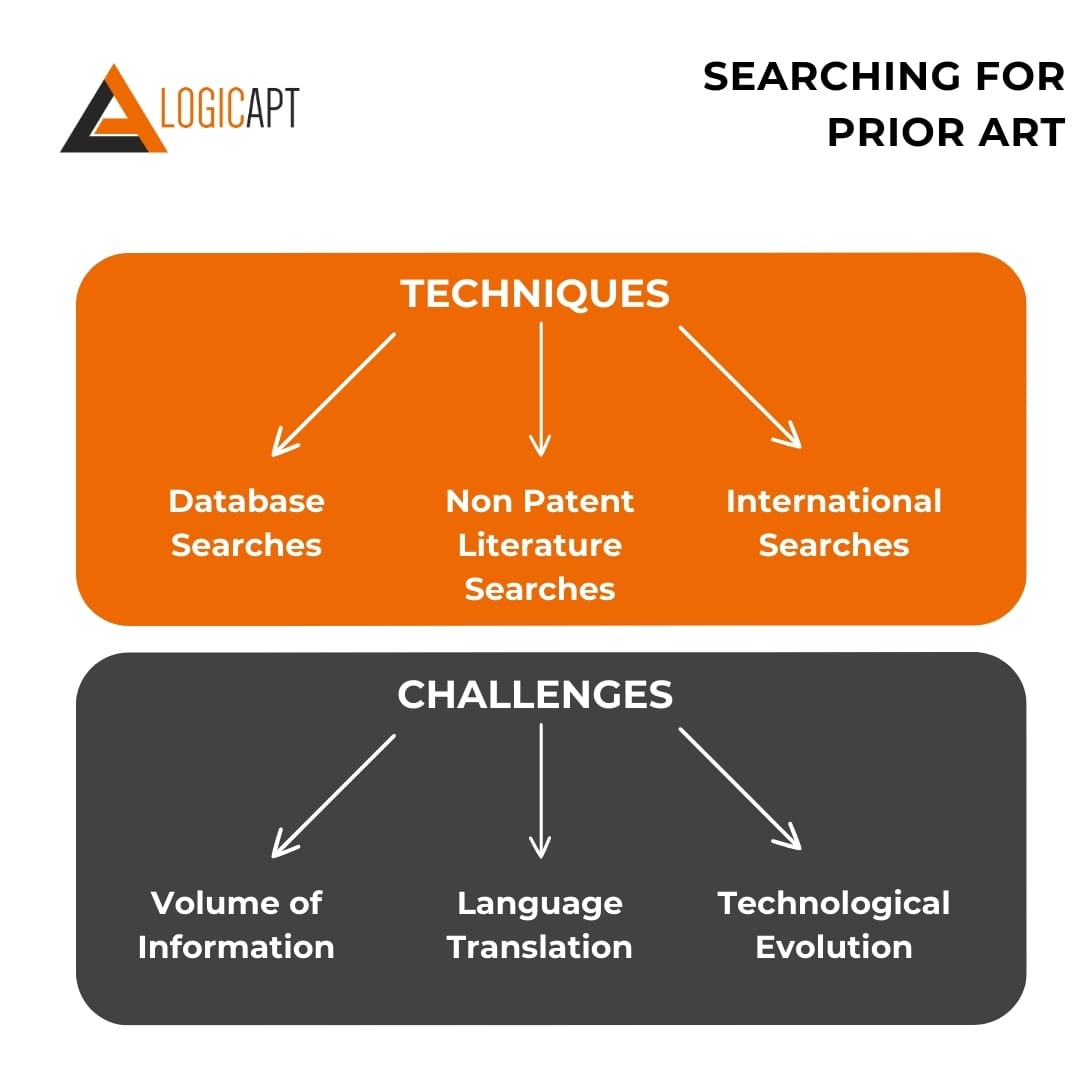
- Techniques:
- Database Searches: Utilizing patent databases and academic journals. This is often the first step, thoroughly searching existing patents and literature in relevant fields.
- Non-Patent Literature Searches: Exploring industry publications, technical reports, and other non-patent sources. This step broadens the search beyond traditional patent documents.
- International Searches: Given the global nature of prior art, searches often extend to international databases and publications.
- Challenges:
- Volume of Information: The sheer volume of existing patents and publications can make the search daunting and time-consuming.
- Language and Translation: When dealing with international sources, language barriers can pose significant challenges, requiring translations and local expertise.
- Technological Evolution: Rapid technological advancements mean staying current with the latest developments, which is crucial yet challenging.
This is crazy, but mastering the search for prior art is as crucial as the innovation process. A thorough and strategic approach to searching for prior art informs the patent application process and fortifies the patent's defensibility in potential litigations.
Case Studies and Examples
Theory and practice often intertwine in fascinating ways in the realm of patents and prior art. This is crazy: real-world cases where prior art has played a pivotal role often provide the most insightful learning experiences. Let's delve into some notable examples and perform a comparative analysis to understand how different interpretations of prior art have influenced patent law.
Notable Examples of Prior Art Impacting Major Patent Cases
- The Smartphone Wars: One of the most famous examples involves the legal battles between major smartphone manufacturers. In these cases, prior art was frequently used to challenge patents. For instance, existing designs and technologies were presented to invalidate patents on smartphone features, impacting both litigation outcomes and future technology development.
- The CRISPR Patent Dispute: This groundbreaking biotechnology case highlighted how prior art can influence patent rights in cutting-edge fields. Disputes over who invented key CRISPR gene-editing technology first led to intense scrutiny of prior art, which included earlier publications and patents. This case showed how prior art can determine patent ownership in highly competitive and rapidly advancing fields.
- 3D Printing Technologies: The rise of 3D printing saw numerous patent litigations, with prior art playing a pivotal role. Older patents and academic papers were often cited to challenge the novelty of new 3D printing patents, influencing both patent grant decisions and the scope of patent claims.
Comparative Analysis: Different Interpretations of Prior Art
But here’s the kicker: these cases also demonstrate how jurisdictions interpret prior art differently. For example:
- US vs. European Patent Law: The US focuses more on the 'first-to-file' principle, while European law emphasizes 'absolute novelty,' meaning any prior public disclosure can invalidate a patent. This difference in interpretation can lead to varying outcomes in patent disputes.
- Broad vs. Narrow Interpretations: Some jurisdictions interpret prior art more broadly, considering a wide range of sources, while others may adopt a narrower view, focusing on specific types of disclosures.
- Impact on Patent Strategy: These differences necessitate tailored patent strategies for international businesses. Understanding the nuances of how different regions interpret prior art is crucial for adequate global patent protection.
Challenges in Identifying Prior Art
Identifying prior art is an endeavor fraught with complexities, and as technology evolves, so do these challenges. It gets better/worse: the advancements that make it easier to search for prior art also contribute to the increasing complexity of the task.
The Complexity and Evolving Nature of Prior Art Identification
The primary challenge in identifying prior art stems from the sheer volume and diversity of information available. Innovations are documented not just in patents but in many channels - scientific journals, technical reports, online databases, and even in less formal settings like trade shows and academic conferences. Keeping track of all these potential sources of prior art is daunting.
Another layer of complexity arises from the interdisciplinary nature of many modern inventions. Innovations often straddle multiple fields, making it necessary to search across a broad range of disciplines. This multidisciplinary approach adds to the complexity of identifying relevant prior art.
Additionally, the global nature of innovation means that prior art can originate from any part of the world, making it necessary to consider documents and publications in multiple languages. This global scope increases the volume of potential prior art and introduces language barriers and the need for accurate translations.
The Role of Technology in Prior Art Search
Modern technology has significantly transformed the landscape of prior art search. The advent of sophisticated search tools and comprehensive databases has made accessing and sifting through vast amounts of information more accessible.
- Online Databases and Search Platforms: Databases like the USPTO database, EPO’s Espacenet, and WIPO’s PATENTSCOPE have revolutionized access to patent documents. These platforms allow users to conduct targeted searches using keywords, classification codes, and filters.
- Machine Learning and AI: Artificial intelligence and machine learning algorithms are increasingly used to enhance the efficiency of prior art searches. These technologies can analyze large datasets, identify patterns, and even predict the relevance of documents, thereby streamlining the search process.
- Collaborative Platforms: The rise of collaborative platforms and online communities has also contributed to more efficient prior art identification. These platforms allow experts worldwide to share information, insights, and discoveries, creating a more dynamic and interconnected search environment.
While the challenges in identifying prior art are significant and growing, the role of technology in mitigating these challenges cannot be overstated. Today's tools and resources offer unprecedented opportunities for comprehensive and efficient prior art searches, a crucial step in patenting.
The Future of Prior Art
As we stand at the crossroads of technological innovation and legal frameworks, the future of prior art is poised for significant shifts. Emerging trends in technology and global intellectual property law are set to redefine how prior art is identified, interpreted, and used in patent law.
Emerging Trends and Future Considerations in the Realm of Prior Art
- Increased Digitization and Accessibility: The future will likely see an even greater emphasis on digitizing all forms of potential prior art. This includes patents, published papers, and less formal sources like online content, software code, and multimedia resources. Enhanced accessibility to these diverse sources will broaden the scope of prior art searches.
- Cross-Disciplinary Integration: As innovations increasingly blur the lines between scientific and technological domains, prior art searches will become more interdisciplinary. This integration will necessitate new strategies and tools to navigate diverse fields efficiently.
- AI and Advanced Analytics: Artificial intelligence is set to play a pivotal role in the future of prior art identification. AI algorithms capable of processing vast amounts of data, recognizing complex patterns, and understanding contextual nuances will revolutionize prior art searches. These advancements could lead to more accurate and comprehensive search results, albeit with new challenges in ensuring the transparency and fairness of AI-driven decisions.
- Global Harmonization of Patent Laws: A growing global trend towards harmonizing patent laws and practices exists. This movement could lead to more standardized definitions and treatments of prior art across different jurisdictions, simplifying the patent process for international inventors and businesses.
Implications for Patent Law and Policy Making
These emerging trends have profound implications for patent law and policy-making. How legislators and policymakers adapt to these changes will significantly impact the effectiveness and fairness of the patent system.
- Adapting Legal Frameworks: Legal frameworks must evolve to address the challenges posed by the digitization and globalization of prior art. This includes developing policies that account for the broader range of prior art sources and the complexities introduced by AI and cross-disciplinary innovations.
- Balancing Transparency and Efficiency: As AI becomes more integral to prior art searches, there will be a need to balance efficiency with transparency and fairness. This balance is crucial to ensure that AI-assisted patent decisions are understandable, unbiased, and equitable.
- International Collaboration: The push towards global harmonization will require increased international collaboration and dialogue. Policymakers must collaborate to develop consistent standards and practices, facilitating smoother patent processes across borders.
Conclusion
This concept is more than just a legal technicality; it's a pivotal aspect of the patenting process that impacts innovation, competition, and legal outcomes. Want to know the best part? Understanding prior art is not just about avoiding legal pitfalls; it's about fostering a culture of informed innovation and strategic thinking in protecting intellectual property.
Summary of Key Points
- Defining Prior Art: Prior art includes anything publicly available before the date of a patent application, from patents and academic publications to public demonstrations and online content.
- Importance in Patent Law: Prior art is crucial in determining the novelty and non-obviousness of an invention, impacting both patent applications and litigations.
- Types of Prior Art: We explored various types, including published materials, existing patents, and public disclosures, each with nuances and implications.
- Legal Implications: The interpretation of prior art varies across jurisdictions, influencing global patent strategies.
- Searching for Prior Art: Identifying relevant prior art involves navigating vast databases and considering global, interdisciplinary resources, with technology playing an increasingly significant role.
- Future Trends: The evolving landscape of prior art, shaped by digitization, AI, and international collaboration, poses challenges and opportunities for the patent world.
Emphasizing the Ongoing Importance of Prior Art
Understanding and effectively navigating the realm of prior art is crucial for anyone involved in innovation and patenting. It's about safeguarding your creations, respecting the intellectual achievements of others, and contributing to a healthy ecosystem of innovation. Prior art helps define the boundaries of what can be patented and ensures that the patent system rewards true innovation, maintaining a balance between individual rights and public knowledge.


